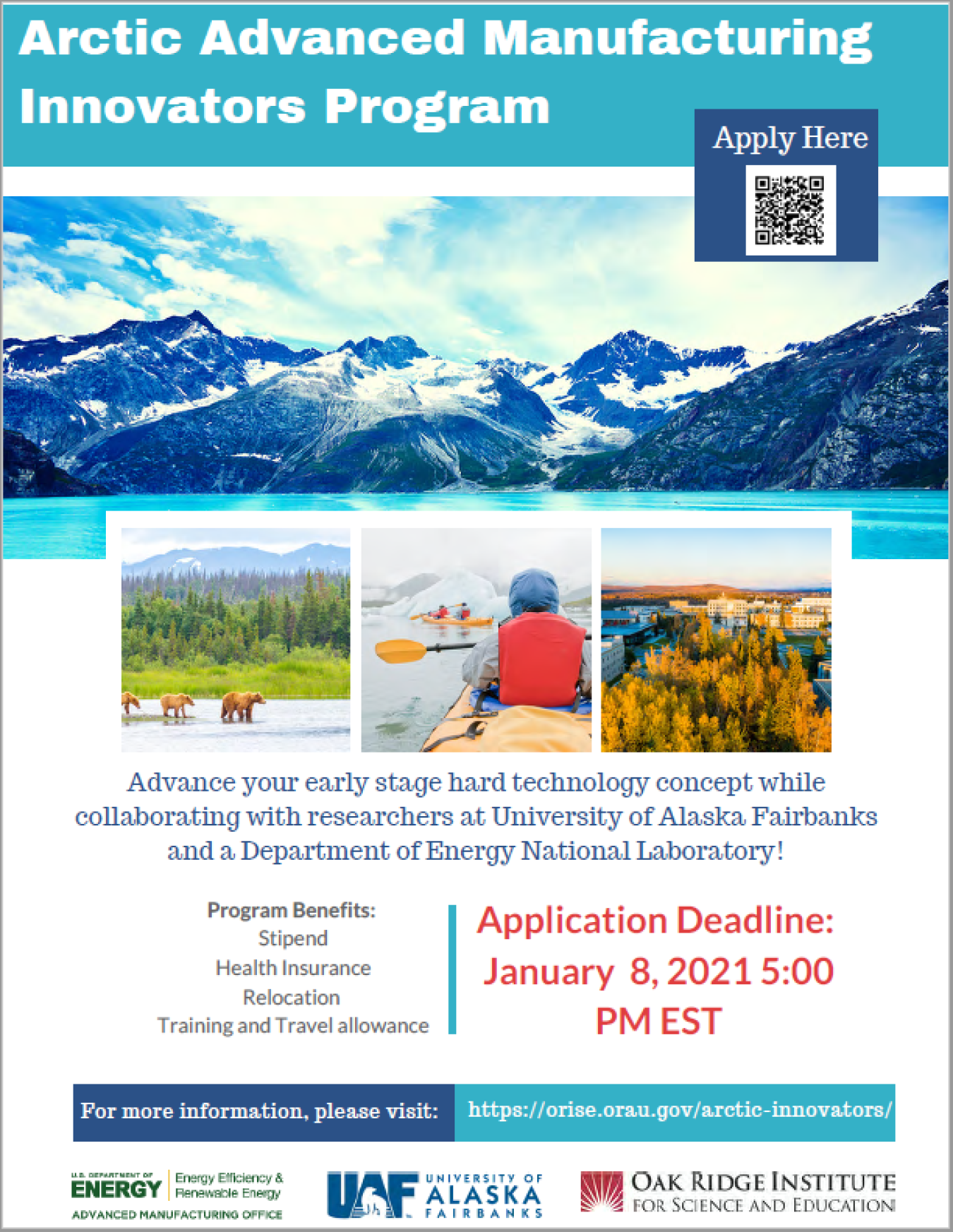Dr. Nathan Prisco answers questions about the Arctic Advanced Manufacturing Innovator Program.
December 9, 2020The Arctic is a region with a natural abundance of resources and challenges. High energy costs, dependance on diesel to power generators and reliability issues with fuel lead to an energy landscape which can be difficult and unforgiving. But it is also a region with immense innovation and creative thinking. When Kotzebue, a small city on the Alaskan Arctic Circle, installed wind turbines in 1997, they were the first in the region and were considered a leader in wind-diesel hybrid generation. According to a study from the National Renewable Energy Laboratory, one gallon of diesel fuel is saved for each 14 kilowatt-hours produced by the wind farm. When diesel can cost upwards of $10 a gallon, these can lead to real savings.
These turbines have helped cut back on diesel consumption and lower energy costs in the region. They also serve as an example to others of new ideas to overcome the numerous challenges in the region. To encourage and bring in innovators to the Arctic, the Department of Energy founded the Arctic Advanced Manufacturing Innovator Program last year. The program is designed for early career professionals with fresh ideas and innovative approaches to address fundamental hard technology manufacturing challenges. As a part of the program, Innovators work jointly with a National Lab and with the University of Alaska Fairbanks.
To learn more about this program and unique experience I sat down with Dr. Nathan Prisco the program’s first Innovator and got a firsthand account.
Before getting into the discussion with Nathan, the deadline for the program is January 8, 2021. To learn more or apply, visit: https://orise.orau.gov/arctic-innovators/.
1. How did you find out about the program?
From an email list-serve through UC Santa Barbara’s Material Research Laboratory. But I had been thinking about Alaska specific energy challenges for months before ever since I had attended a Senate Energy and Natural Resources hearing on small-modular nuclear. It is especially exciting these technologies can be used for process heat, that is potentially transformative for hard to decarbonize industries like the chemical manufacturing sector.
2. What about this program did you find interesting or unique?
At the time I was unfamiliar with the other Lab-Embedded Entrepreneurship Programs (LEEP), but even now, this one still feels special. First, UAF is a wonderful community, it has been an incredible easy process to expand my collaborative network. Second, between the UAF Center for Innovation, Commercialization, and Entrepreneurship and Launch Alaska, the new venture development program here gives California a run for its money. It has only been two months, and I am already collaborating on a couple of grant proposals in partnership with the University of Alaska Fairbanks, the University of Arkansas Fayetteville, and local start-up Alyeschem on a distributed manufacturing concept to improve access to energy and water resources.
3. Have you been to Alaska before?
No, but arriving here was a momentous occasion. Even as a Texan, it is hard to appreciate how far away and big Alaska is. On my drive in, somewhere between North B.C. and Yukon my engine blew out and I hitch-hiked to a First Nations village. My tow-truck driver was a former gold miner who showed me some the old sites and made a compelling argument for building the railroad to Alaska. After spending a few days in a former WWII-era US Airforce bunker (now hostel) in Watson Lake, I drove the rest of the Alaska Highway in a 20 ft U-Haul truck towing my car behind me. Having lived in Alaska for a couple months now, I can tell you the people here are just as interesting here as in the Yukon.
4. Three months into the Fellowship, how do you feel about your professional experience so far?
To be honest, when your job title is “Arctic Innovator”, it is easy to get a call back for your customer discovery interviews. I have learned so much, not only about Alaskan businesses, but have also had the opportunity to discuss my early stage manufacturing process with Yara, a Norwegian company and one of the world’s largest producers of fertilizers.
5. The program mixes experience at the University and at a national lab, can you tell me a little bit about how that is?
I will be relocating to my host lab at the end of January, but my collaborator and mentor Carlos Fernandez at Pacific Northwest National Lab has been incredibly responsive and has connected me with the resources and collaborators that I will need to succeed.
6. Would you recommend the program to others?
Of course! Don’t be afraid to apply, if you don’t know where to start just check out the Alaska Center for Energy and Power website and go from there.


